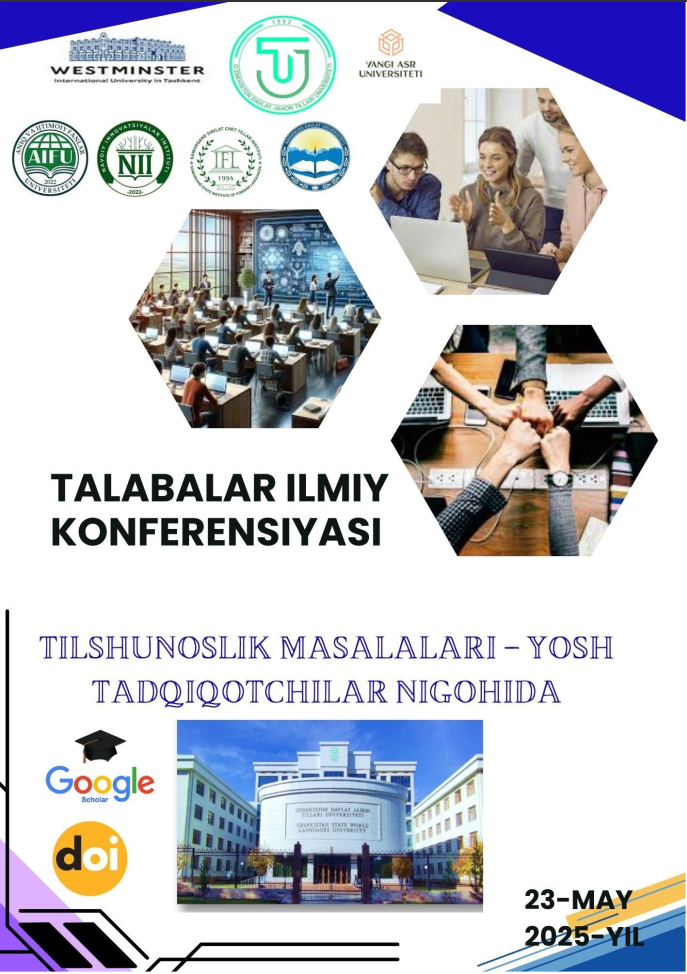THE POLYSEMY OF COMPOUND WORDS IN DIFFERENT LANGUAGE SYSTEMS AND THEIR USE IN TEXTS
https://doi.org/10.5281/zenodo.15547570
Kalit so‘zlar
Polysemy, compound words, meaning, language systems, English, Russian, Turkic languages, cross-linguistic analysis, semantics, textsAnnotasiya
This study examines the nature of polysemy in compounds in different language systems, with a particular focus on their use in real texts. Compounds, formed by merging two or more morphemes, often exhibit multiple meanings that may vary depending on linguistic, cultural and contextual factors. The study offers a comparative perspective by analyzing polysemic compounds in English, Russian and Turkic languages, describing both their structural and semantic differences. By conducting a cross-linguistic evaluation, the article reveals recurring trends in semantic broadening and assesses how polysemy in compounds affects interpretation, translation, and textual clarity. Furthermore, it examines how such compounds are employed in literary works, media, and everyday communication to create expressive or layered meanings. The findings highlight the critical role of polysemous compounds in multilingual communication and cognitive processing, providing practical insights for language scholars, educators, and translators.
Foydalanilgan adabiyotlar ro‘yhati
Erdanova, Z. (2021). THE PROBLEM OF THE NORMS OF PHRASEOLOGICAL UNITS. Mental Enlightenment Scientific-Methodological Journal, 2021(1), 74-81.
Fillmore, C. J. (1982). Frame semantics. In Linguistics in the morning calm (pp. 111–137). Seoul: Hanshin Publishing.
Gachev, G. D. (1983). Language and culture. Moscow: Progress Publishers.
Gulomova, R. (2022). AUTHENTIC MATERIALS AS A SOCIOLINGUISTIC APPROACH. British View, 7(1).
Plungian, V. A. (1990). Polysemy in lexical system. Moscow: Nauka.
Rashidova, G. (2023). INGLIZ TILI DARSLARIDA YOZISH KO’NIKMASINI O’RGATISH JARAYONIDA ZAMONAVIY INNOVATSION TEXNOLOGIYALARDAN FOYDALANISH. Engineering problems and innovations.
Sultonova, M. (2024, October). Features of Critical Thinking Skills for B1 Level Learners. In Conference Proceedings: Fostering Your Research Spirit (pp. 786-790).

